The treasure of the Douro Valley isn’t just the port. High in the Douro Valley, the tiny village of Provesende makes the nail biting journey worth it with some of the best views in Portugal, not to mention port wine.
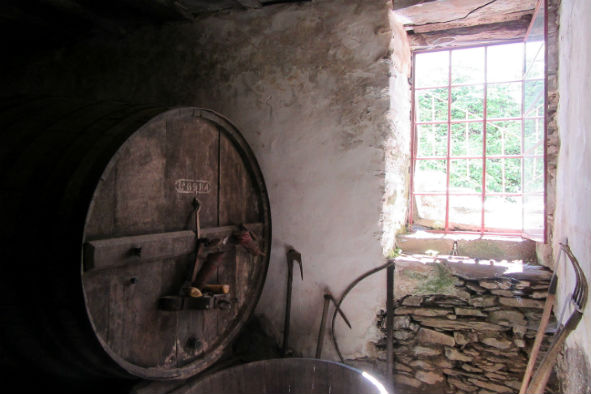
Wine tasting room at Morgadio (Photo: Mike Dunphy)
My knuckles whitened on the bus climbing the N323 road north of Pinhão, Portugal, as awe of the Douro Valley’s vineyard-terraced beauty gave way to anxiety, and soon, seat-gripping fear of the steep, sure-death drops below the windows of the bus. The sharp corners and flimsy guard rails—or none at all—didn’t help.
The audible sigh of relief that escaped my lips joined many others as we took the final hairpin curve of the 30-minute drive to Provesende. In the itinerary provided by the Scenic Azure cruise that got me there, the tiny hilltop village was described as “resplendently showcasing the Portugal of yesteryear.”
In truth, yesteryear never seems far from any of the docking points along the 11-day cruise, and Provesende hardly looks different. However, the remote and somewhat treacherous location undoubtedly limits the encroachment of the modern world, wireless or otherwise.
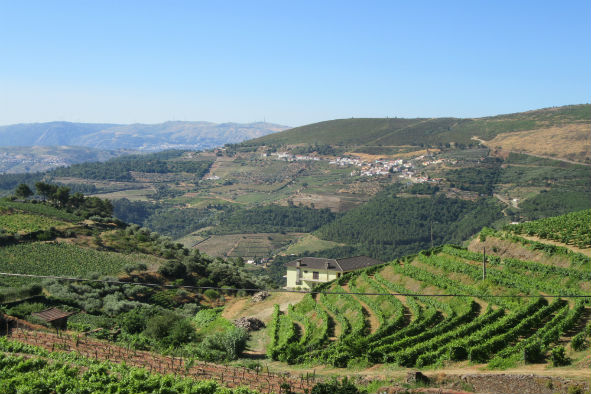
View from Provesende town square (Photo: Mike Dunphy)
Pobre Zaide
Along the gently declining slope of the Rua Cimo de Vila, the handsome white-plastered and stone-trimmed buildings betray a past of somewhat greater importance, as do the aristocratic coats of arms still affixed to several of them. Provesende was once the seat of a municipality and claimed several thousand inhabitants along with a dozen or so noble families. Judging by the distinct lack of activity (and the input of the Scenic guide), today’s village offers far less opportunity, leaving few full-time residents.
To the left, tiny alleyways entice with their ancient stones and secretive curves that push even the modestly curious to see what historical jewel lurks around the next bend—at least until a growling street dog or precipitous slope convinces otherwise.
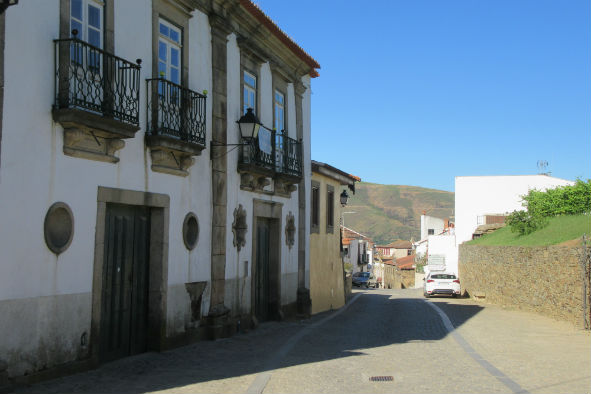
Provesende main street (Photo: Mike Dunphy)
The first building of any significant note is the church dedicated to St. John the Baptist, which stands out from the country’s usually ornate, baroque structures, with a simple arched wood plank ceiling delicately painted in folk art-style with the scene of Christ’s baptism in an oval frame of blue and rose hues.
In this place of peace, it’s worth remembering that Provesende got its name, according to legend, from the death screams of local Moorish king, Zaide, who exclaimed, “Pobre Zaide, pobre Zaide!” as he was torn to pieces by villagers during an uprising. Over the years, the two words were condensed to Provesende.
Of Port and Bread
Nowadays, Provesende has two major claims to fame. First is the famous bakery, Padaria Fatima, in operation since 1940. Adjacent a baroque fountain dating back to 1755 in the main square, the building was constructed from the remains of an olive press, with the millstones built into the walls. Here, in the single wood-fired oven, are baked the approximately 200 loaves per day that draw locals and tourists from all over. A few are diced up for visiting groups, but the rest of the flour-dusted rounds are quickly wrapped up by the baker’s wife in the next room and dispensed to the awaiting crowd. It only took me a single bite to understand why; it may be just plain bread, but the warmth inside becomes less physical and more spiritual as you chew, thanks to the simple preparation that spurs nostalgia for all our yesteryears and a taste so pure that smearing on any adjuncts seems a crime.
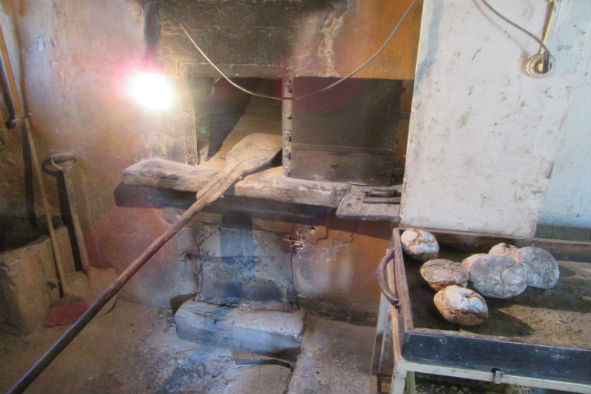
Padaria Fatima bakery oven (Photo: Mike Dunphy)
Provesende’s most notable attraction—the manor house Morgadio Da Calçada—sits at the western edge of the village. Built around 1680 by a powerful magistrate, Jerónimo da Cunha Pimentel, it’s amazingly still owned by the family, who reside there during the tourist season, between February and November.
During visiting hours, the family graciously allows tours through the upstairs living quarters to marvel at the rich history inside, including the original colored ceilings, a collection of 18th– and 19th-century paintings, Belle Époque furniture, autographed and dedicated pictures to the family from the last king and queen of Portugal, and even an original toilet from the 1800s. On occasion, guests can dine under candles in the dining room. For overnight stays, the barn and other agricultural buildings were renovated and opened as a guesthouse in 2012.
For most visitors, who just come to Provesende for a couple hours, the real highlight is in the ground floor tasting room, which itself looks and smells like a barn (in the best possible way). Inside the entrance, two car-sized antique wine casks—one each side—funnel visitors in single file through the narrow space until they reach the long communal table beyond, where the port is poured.
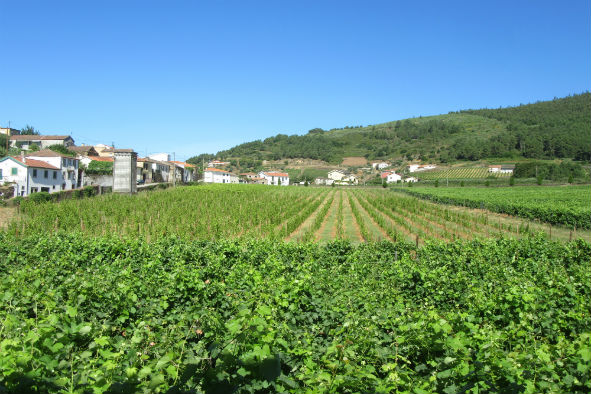
The vineyards at Morgadio-da-Calcada (Photo: Mike Dunphy)
The port is produced in partnership with Dirk van der Niepoort, whose family has been shipping port since 1842 and making wine since 1987. The Pimentel family cultivates the grapes—grown outside the building on 11 acres—and Neipoort turns them into approximately 50,000 bottles per year. He does a damn fine job of it, too.
After the group downed several samples of the dry white port, more than a few made beelines to the on-site gift shop. I picked up a tawny red myself, and it didn’t last the week. Indeed, if port wine is an acquired taste, I doubt there’s any better place to do so than in Provesende. But the love may have as much to do with the setting around the bottle as the sweet, silky liquid inside.
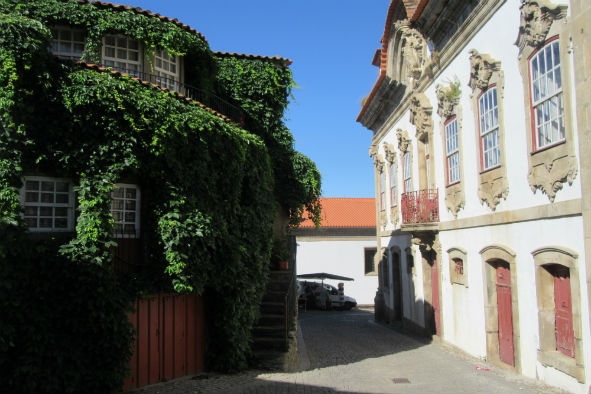
Provesende main street (Photo: Mike Dunphy)
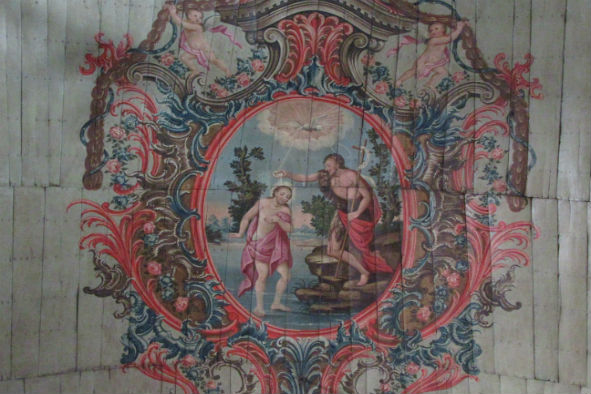
Ceiling of the town church (Photo: Mike Dunphy)